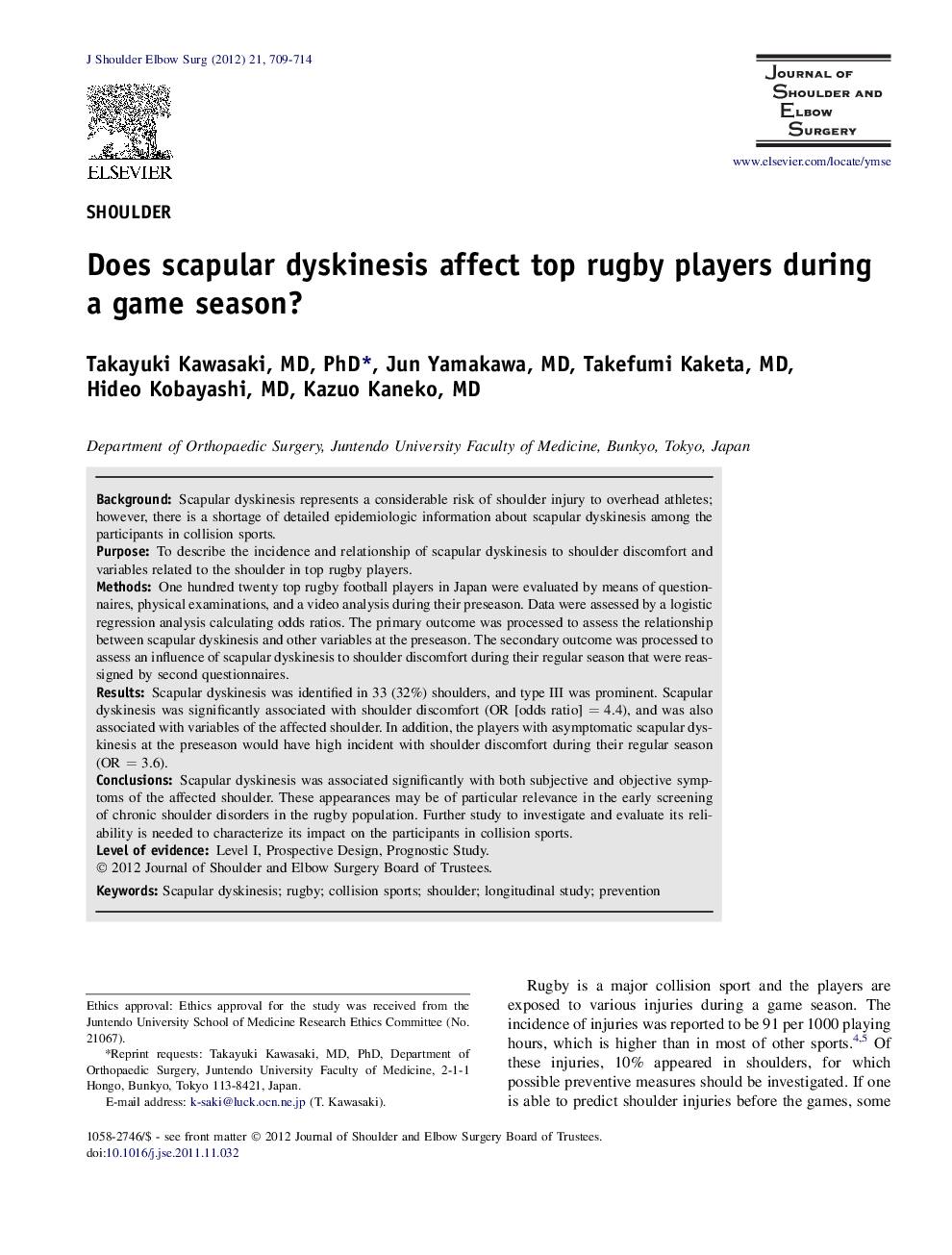| Article ID | Journal | Published Year | Pages | File Type |
|---|---|---|---|---|
| 4074371 | Journal of Shoulder and Elbow Surgery | 2012 | 6 Pages |
BackgroundScapular dyskinesis represents a considerable risk of shoulder injury to overhead athletes; however, there is a shortage of detailed epidemiologic information about scapular dyskinesis among the participants in collision sports.PurposeTo describe the incidence and relationship of scapular dyskinesis to shoulder discomfort and variables related to the shoulder in top rugby players.MethodsOne hundred twenty top rugby football players in Japan were evaluated by means of questionnaires, physical examinations, and a video analysis during their preseason. Data were assessed by a logistic regression analysis calculating odds ratios. The primary outcome was processed to assess the relationship between scapular dyskinesis and other variables at the preseason. The secondary outcome was processed to assess an influence of scapular dyskinesis to shoulder discomfort during their regular season that were reassigned by second questionnaires.ResultsScapular dyskinesis was identified in 33 (32%) shoulders, and type III was prominent. Scapular dyskinesis was significantly associated with shoulder discomfort (OR [odds ratio] = 4.4), and was also associated with variables of the affected shoulder. In addition, the players with asymptomatic scapular dyskinesis at the preseason would have high incident with shoulder discomfort during their regular season (OR = 3.6).ConclusionsScapular dyskinesis was associated significantly with both subjective and objective symptoms of the affected shoulder. These appearances may be of particular relevance in the early screening of chronic shoulder disorders in the rugby population. Further study to investigate and evaluate its reliability is needed to characterize its impact on the participants in collision sports.
